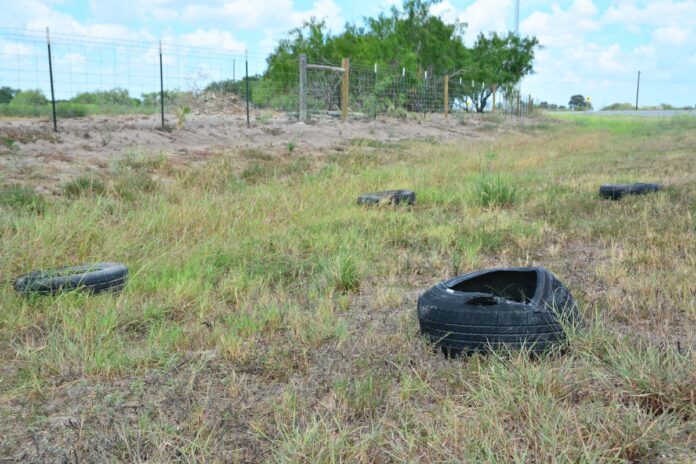WESLACO — This summer’s tire recovery effort marked the end of the road for 17,000 used and worn-out tires, dropped off at 40 city and county sites.
That nearly doubled the 10,000 tires collected in the Valley last year. Of this year’s total, 105 were collected in Harlingen.
The program called “Road to Recycling” held July 28 isn’t quite a finished concept, and these tires were collected and sent to disposal sites which at this point merely broke them up so they take up less space in a landfill.
The effort this year consisted of several methods to break up the complex components of a modern-day steel-belted auto and truck tire, said Ron Garza, executive director of the Lower Rio Grande Valley Development Council.
The cheapest disposal method, at $1.32 per tire, was a machine owned by the City of Brownsville aptly called “The Terminator.”
“What ‘The Terminator’ does is it takes a tire which obviously is a very complicated compound of metal and rubber and it grinds it down to a small chunk,” Garza said. “When the chunk goes to a landfill, you’re taking up so much less volume than you would if you were putting a whole tire in the landfill.
“Again, it’s not zero environmental impact, but it’s so much better than putting in a whole tire,” he added.
Garza admitted the “Road to Recycling” is still short on the recycling concept, but he said the Valley is progressing.
“These collection efforts are just a means to get to our goal, which is to have a sustainable, usable kind of byproduct like aggregate or something that can truly be recycled,” he said. “It may take a year or two but we’re going to do that.
“You have to create a market but we’ve had a lot of technical opinions on this and I think we’re closer to what we’re going to eventually do,” Garza said.
The cost of the tire disposal was paid for by the LRGVDC, and the 40 cities and county sites across the Valley donated time and effort by city workers as they accepted the tires.
That kind of regional effort in the Valley can be seen as a victory, too.
“What we needed the cities to do, their contribution, was facilitating the actual drop-off sites and then transporting it to one of the disposal sites,” Garza said. “So they paid their fair share, also. To see 40 sites, that’s pretty impressive. If you just looked at the map, it shows you regional collaboration once you see the counties and the cities.
“It’s actually hard to compare other regional collaborations with this one, which goes back to how important and how vital the issue of illegal tires is in the Valley,” he said.
Abandoned tires are not just unsightly, they can be dangerous.
After filling with water following rainfalls, the tires serve as nurseries for potentially disease-carrying mosquitoes.
When abandoned in ditches along roadways, they can severely disrupt drainage during flooding, causing water to back up over roads and into yards and even into houses.
During the heavy rains in June, abandoned tires along roadways were choking ditches and drainage systems, Valley officials said last month.
SITES — 40 collection sites across the Valley
TIRES — 17,000 used and worn tires were dropped off
WHO — Rio Grande Valley Regional Development Council
WHY — LRGVDC is the state-designated agency for solid waste management issues in the region. Tires are a significant component of landfills by volume, and by reducing them to chunks after they are turned in they take up much less space
WHY NO RECYCLING? — At present, LRGVDC and its participating cities and counties don’t have the capabilities to recycle used tires but officials say it is their eventual goal.




